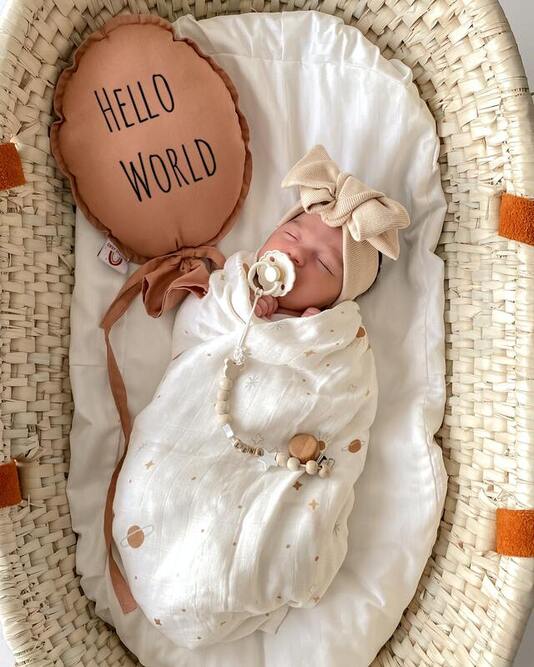 As technology continues to progress, there is always some kind of new flashy new baby gear that claims to make your baby sleep. Registries grow and become more complicated. The choices are never ending! New parents find themselves torn over which items to buy that will give them the *most* success to get their newborn sleep. With all of the new, advanced sleep options for baby, it’s important to consider long and short-term goals before rushing to purchase the newest baby gear. Every newborn should have a bassinet, crib, portable crib, or baby box as their own sleep space. Following Safe Sleep guidelines reduces the risk of sudden infant death syndrome (SIDS). But have you heard of the Snoo bassinet? The Snoo is a bassinet made by the company Happiest Baby that comes equipped with sound sensors, wifi, white noise speakers and a robotic motor that rocks your baby to sleep if your baby makes noise. Sounds incredibly fancy, right? All of that sleepy time magic comes with the price tag of $1,600. You also have the option now to rent a snoo near you at a cost of $500 per month! That's on top of all the extra baby gear you have to buy, including a car seat, stroller and most importantly...lots of diapers! Parents frequently ask me my opinion of the Snoo and overall, it's a great tool...until baby grows out of it. I have worked with many clients that started out working with me when their baby was in the Snoo and we successfully transitioned to a crib. All the babies are sleeping well…now. Here are a few things you should consider before jumping in to buy or rent a Snoo. How does the Snoo work? The Snoo is an all-in-one bassinet and baby soother. It gives you the smaller space required to have your newborn sleep in your room without taking up much space, has white noise and rocks your baby to sleep. So, does it work…in short…yes! But only for a limited amount of time. Online reviews rave about how well the it rocks your baby back to sleep. Having the bassinet do all the work for you sounds amazing! The added sound machine and the included swaddle are both accessories of the Snoo, eliminating the need to get these separately. The biggest downside to the Snoo or any motion bassinet is the creation of a dependency on motion to get your child to sleep. When baby outgrows it around 4-6 months of age or simply is too big for it, you’ll need to transition to a full sized crib, mini-crib or portable crib AND you’ll need to work on getting baby to sleep without motion or rocking. What’s the cost of getting a newborn to sleep? This first thing that jumps out at me when considering the Snoo is the price tag. $1,600 for a bassinet?! However, as a sleep consultant, I truly believe that good sleep is priceless! Consider this; a bassinet is not forever, it’s a good tool to use for a few months of life. While a crib can be used for several years, a bassinet is typically used for about 4-6 months (and that’s if baby doesn’t outgrow it sooner!). All things considered, your baby will be using this bassinet for roughly 180 days. And once baby outgrows the Snoo, you’ll still need a full sized crib! For some, it’s a great tool, for others they might want to get more bang for their buck. Will I still have to sleep train if I use the Snoo? If you think of falling asleep like a skill that we have to learn, then yes, you will have to eventually teach baby to fall asleep without the motion of the Snoo. For instance, if a baby is constantly being rocked to sleep by a bassinet, they form a sleep habit. Once it comes time to transition from the Snoo to the crib, then this habit will need to be changed in order to teach baby how to fall asleep without the motion. The transition may prove to be harder than it would be with a standard bassinet or portable crib and parents should consider if this challenge is worth it. For some babies, the change from the Snoo to a crib can be hard and will require some prior planning to manage the transition. Weaning and transitioning from the Snoo can be done cold turkey but parents should consider gentler methods to do it as well. So what should you do? Consider cost, length of use and your desire to avoid sleeping training later before purchasing or renting one. If the cost isn't worth it or you don't see long term benefits of using it, consider introducing healthy sleep habits early on. No matter what bassinet you use, you and your baby CAN achieve good sleep. By doing a bit of research and weighing out the options, you and your partner can make the right decision for your family. What about you? Have you ever used a Snoo? What are your honest reviews? I would love to hear your thoughts! And if you’re not sure how to transition out of the Snoo, please reach out. Happy sleeping! |
Categories
All
|
